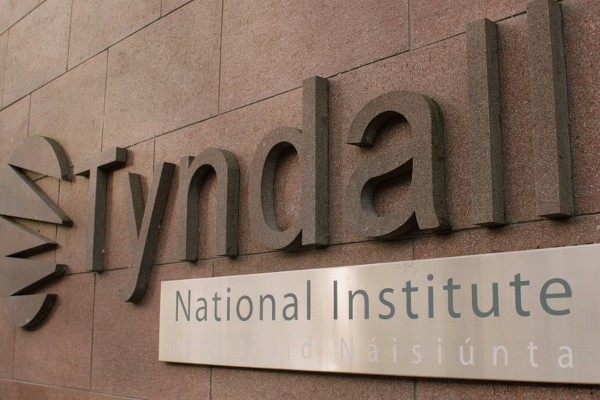
Minister for Further and Higher Education, Research, Innovation and Science, Simon Harris, TD, has announced 71 grants valued at €53 million to support frontiers research across 12 Higher Education Institutions, including Tyndall National Institute, UCC, through Science Foundation Ireland.
We are proud to share that three of our researchers are recipients of this funding which will help accelerate ground-breaking research in Next Generation Data Storage and Leaner, Greener, Future Networks.
Tyndall recipients of SFI Frontiers for the
Future Programme Funding
Researchers: Dr Lynette Keeney & Dr Michael Nolan
“Optimisation of Single Phase Room Temperature Multiferroic Materials Enabling Next Generation Data Storage”
The remarkable growth of the internet means that data storage based on either electric or magnetic information storage is already struggling to match the ever-increasing demand for data. Multiferroic materials simultaneously combine electric and magnetic properties, allowing for novel ways of manipulating data and storing information. In this exciting new project, we will foster a new collaboration between theory and experiment to enhance the functional properties of a revolutionary multiferroic discovered in Tyndall. We will explore how even subtle differences between the ways that atoms arrange within their structure can have a marked influence on the material’s physical properties. This enhancement of multiferroic properties, at thicknesses required for miniaturised electronic devices (about 6000 times thinner than a human hair), will allow an eight-times increase in the amount of data that can be stored, which will significantly advance data storage capabilities over current state-of-the-art.
“Multiferroic materials have the potential to revolutionise data storage capacity, but there are as yet no materials that can realise this promise. To realise this ambitious aim, our SFI project brings together world-leading researchers in multiferroic materials (the lead PI Dr. Lynette Keeney (Tyndall NI), first principles materials modelling (co-PI Dr. Michael Nolan (Tyndall NI)) and collaborators Prof. Roger Whatmore (Imperial College London / Henry Royce Institute)), and Profs. Valeria Nicolosi and Lewys Jones (Trinity College Dublin, world leading microscopy)), which will further cement Ireland’s key role in internationally leading materials research.

Fig. 1. Atomic resolution electron microscopy image of the B6TFMO multiferroic material demonstrating the natural preference for magnetic atoms to congregate towards the central layers of the structure. In this SFI Frontiers for the Future project, we will optimise conditions to increase the extent of magnetic interactions to enhance information storage capacity. Images taken from reference = Keeney, L. et al., Sci. Rep., 7, 1737 (2017). Rights and permissions for use of image: Not required to obtain permission to reuse this article as this article is licensed under a Creative Commons Attribution 4.0 International License.

Tyndall recipient of SFI Frontiers for the
Future Programme Funding
Researcher: Dr Felipe Murphy Armando
“Orbitron: Spin, charge and light polarisation control and characterisation of CMOS compatible light sources - Leaner Future Networks”
Driven by the phenomenal data transmission and gathering from smartphones, video streaming and the Internet of Things, the world’s data in 2020 has increased by 50 times from 2010. More data requires faster communication and faster communication requires faster switches for bit transmission. Today, the electronic charge is used to manipulate bits in electronic communications technology. Spin, another electronic property of the electron offers exciting possibilities. Compared to charge, manipulating spin requires tiny amounts of energy. The emerging field of spin-optronics would enable a new generation of ultrafast optronics that use very little power and multiplies the bandwidth of telecommunications. The aim of Orbitron is to enhance the spin-optronic properties of materials compatible with today’s electronics to realise the dream of green, ultra-fast information devices.
Germanium-based materials are showing great promise in spin-optoelectronics. However, a Germanium spin-based light emitting material has yet to be realised.
In this project, lead PI Felipe Murphy Armando in close collaboration with leading experimentalists Dr. Fabio Pezzoli, Universtity of Milano Bicocca (Italy) and Dr. Moritz Brehm, Johannes Kepler University (Austria) will use first-principles materials modelling methods to investigate the fundamental spin-scattering processes that limit or enable germanium-based spin-optoelectronics for faster, greener telecommunication networks.

Fig. 2: Amplitude of the electron wavefunction of the lowest conduction band (top) and the top of the valence band (bottom) in a Ge/Si heterostructure.
Commenting on the programme, Minister Harris said:
“Congratulations to all the researchers who have received funding today as part of the SFI Frontiers for the Future Programme. I am delighted to support this programme which funds individual-led research, with an emphasis on areas of high-risk, high-reward, which will help us build a better future for Ireland through discovery, innovation, and impact.”
“I am pleased to see the successful outcome of the new gender initiative that sees 45% of the research grants announced today led by female researchers. The funding will support researchers who are already carrying out excellent work in Ireland, as well as those in the early stages of their research careers who hold incredible potential. It is through investment like this that Ireland will become an innovation leader and provide solutions and opportunities for our society and economy.”
